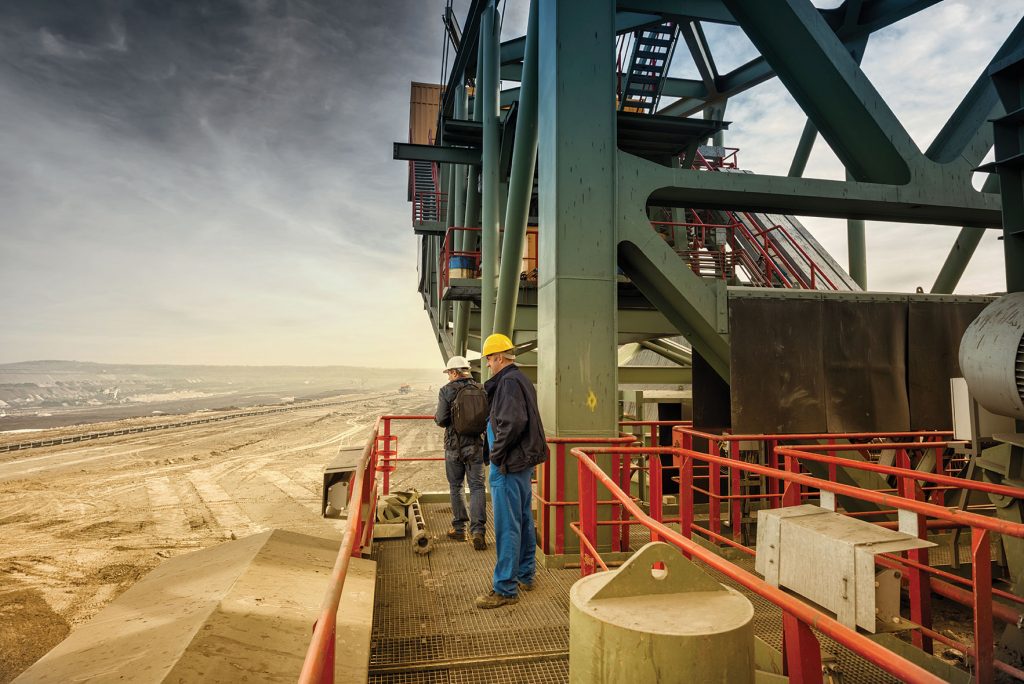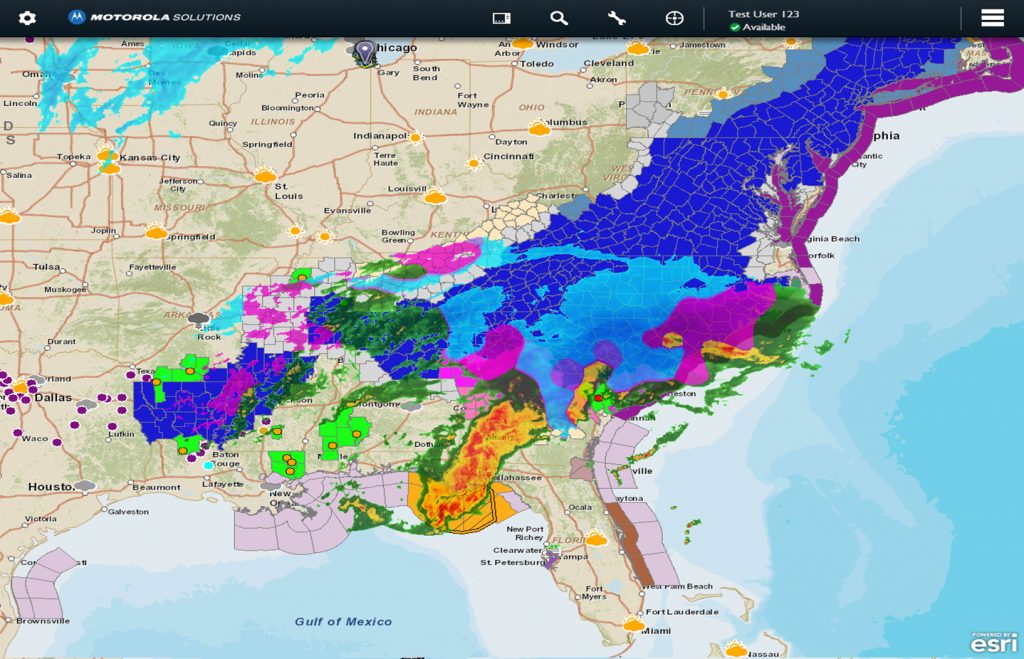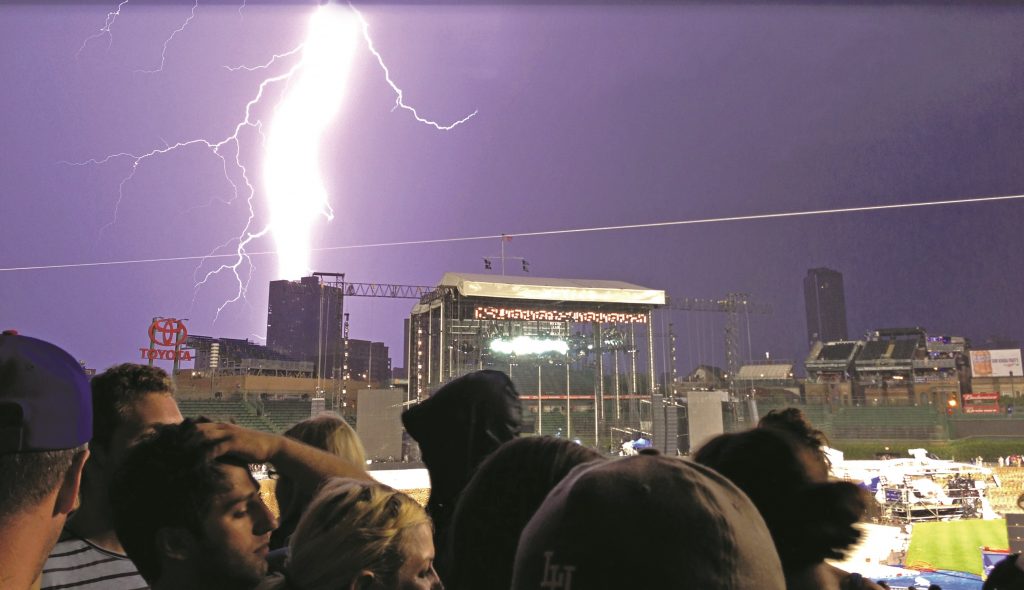
Every second counts for businesses that depend on AccuWeather to save lives, stock supplies, stage events
It’s only now that the East Coast and Midwest are thawing out from a long winter punctuated by unprecedented snowfall and bone-chilling temperatures. But in the thick of it, weather conditions changed rapidly. Using AccuWeather’s detailed forecasting, Lowe’s was able to get its trucks out ahead of those challenging conditions and get much-needed storm- and home-fortifying supplies to their stores – especially those hardest hit in the Northeast.
“That information allowed us to get winter supplies to our stores before they became scarce,” says Rick Neudorff, manager of Lowe’s command center, founded in 1989 in response to Hurricane Hugo. “The challenge is to have products available ahead of time, so when everyone else is scurrying around to restock, you’re in good shape and not trying to pull out of an inventory deficit.”
Lowe’s is one of AccuWeather’s many enterprise solutions customers, which range from big box stores – like the almost 2,000-store strong home improvement mainstay (Lowe’s), rail and car companies – to small school districts and plowing services.
“We provide weather-related data for a wide range of corporate and consumer consumption. We provide highly specific weather forecasts, specific to business needs, such as hyper-accurate and hyperlocal severe weather warnings,” says Casey McGeever, AccuWeather’s chief commercial officer. “This helps save hundreds of lives every year.”
Lowe’s, Motorola and LiveNation are just a few examples of the ways AccuWeather Enterprise Solutions, the commercial weather services division of AccuWeather, Inc., delivers mission-critical weather-driven enterprise solutions to assist businesses, government, media, and institutions, protecting people, property and profits worldwide. Serving over 240 of the Fortune 500 companies and thousands more, AccuWeather enterprise products and services include the most accurate, site-specific and customized severe weather warnings, short- and long-range forecasts, legal forensics and weather-triggered analytics, providing actionable insights from the world’s largest weather media company – making a difference to businesses worldwide.
AccuWeather also provides the kind of data that can relate historical weather to warranty claims and weather predictions tied to future product sales.
“We have an enormous amount of data that underlays all our products, all stored in the cloud on Azure,” McGeever says. “Almost all of that is done in SQL. All of it goes through Outlook, Word and Excel. We are a big data company. We need to move around and deliver instantly. It’s a powerful platform for us. Seconds matter when life and death decisions are happening.”

For Lowe’s, working without AccuWeather would mean having to cull information from multiple websites and try to come up with a consensus – a time-consuming, labor-intensive proposition. In their business, as with many others, they don’t have that time to spare.
“It’s made a big difference because it helps us properly prepare,” Neudorff says. “AccuWeather helps us because it’s so pin-pointed within short periods of time and it’s extremely accurate, both with short-term and longer-term forecasts. For instance, with the significant rainfall last year in Chicago, Detroit, Phoenix and Long Island, we were able to see which areas were getting more rain, then change our routes if we knew those roads would be washed out.”
During the big snows this winter, Lowe’s stores had snow blowers, shovels, heaters, ice melts, rock salt and roof melts.
“Lowe’s is a destination after – as well as before and during – a major weather event. To get back to normal, customers need to know we have the items they need,” Neudorff says. “We need to proactively get those products to them. It’s important for a smooth operation of our stores to not have disruption, so we can take care of our community and customers coming in frantically looking for specific products.”

For emergency workers who need to know the best way to get to a critical situation, GPS won’t cut it. Some rely on the subscription-based Motorola Solutions Intelligent Data Portal, which AccuWeather powers with real-time weather services that provide the intelligence to marry a variety of data points with crime statistics. Motorola makes this service available to police officers, firefighters and other first responders through a browser. These locations could be the site of police chases, accidents and crime scenes – and the first priority is to triage.
“A big piece of that response factor is of the impact of weather, what Mother Nature provides,” says Motorola spokesman Ryan Seick. “We focus on what I call the three R’s: Routing (how they get to where they need to go), response (how to take steps to make the situation better – adjusting for weather) and recovery (how to help people get back to normal).”
These are dynamic, constantly changing variables. This is the kind of tool that comes in really handy, when, say, a 911 call comes in and an emergency responder is dispatched during a torrential downpour. The portal would let the responder know about flooded areas and alternative routes to get to where they need to be.
“AccuWeather’s MinuteCast tells you within 120 minutes how much impact the weather will have in a certain location,” Seick says. “Responders will know which roads will get shut down and won’t route anybody that way.”
The recent ice storm in Texas is an example of how having timely weather information can help save lives and prevent accidents. When authorities know what to expect, they can shut down roads to prevent car pileups, stage police cars to slow down passing motorists and other preemptive steps.
“Weather is the thing in the back of your mind, it just happens,” Seick says. “But when you have the information, you can start looking at trouble areas and can help prevent that stuff from occurring. What AccuWeather provides is the core aspect of what the portal provides that immediately has direct actions on what my customers are going to do. We need to have accurate and timely data and plan for it. If AccuWeather issues an alert before the National Weather Center, we can help save countless more lives. It gives people enough time to plan and get out. It’s not just a saying that seconds count – they do.”

For the Pearl Jam fans who attended the band’s July 19, 2013 concert in Chicago, ”Lightning Bolt” couldn’t have been a more apt album title and song to hear that night. They heard Eddie Vedder sing it after a two-hour delay, and they saw it flash before their eyes after being cleared from Wrigley Field.
“There’s some heavy weather coming in,” Vedder told them. “It’s going to take a half hour to get everyone to safety. We are on the phone with AccuWeather.”
Luckily, most of LiveNation’s outdoor concerts and street festivals aren’t nearly as dramatic as this. But when severe weather does hit, AccuWeather helps them stay ahead of it.
“We have 30 some amphitheaters, and at any time, all 30 of them could be working, so that means a lot of exposure, a lot of people,” says Wilson Rogers, LiveNation’s executive vice president for amphitheater operations. LiveNation’s outdoor shows can draw in 2,000-100,000 fans. “We find what AccuWeather does for us is invaluable. I can’t imagine working outdoor shows without that kind of intel. We now have latitude and longitude. Intelligence has become much more precise, not casting a net over a broad area.”
The world – and its weather – is a much different place than it was when Rogers was growing up.
“CBS, NBC and ABC Nightly news rarely if ever had a story on the weather unless it was a hurricane, or a major fire or something with major fatalities. But now just about every newscast either leads with a weather story or at some point includes a weather story,” he says. “Weather has become so much more volatile. There are still places where it’s pretty consistent, but along the Plains and along the Eastern Seaboard, life has become a different animal. Most of our amphitheaters are there. There was a time when we never had an evacuation, tickets were rain or shine.”
With shows that are vulnerable to tornados, flooding and high winds, LiveNation’s operations rely on the data AccuWeather provides. That window of time can make all the difference in the world.
“When you have 20,000 people you need to evacuate, it’s all about the time it takes for the slowest person to get to their cars,” Rogers says. “If you prepare, you can start making everybody aware of the weather forecast that day and share it. Everyone gets a little bit of information. You have to be able to let these folks know you’re on top of it, you have a plan if a major weather event occurs. The safest thing we can do in all situations is communicate, communicate, communicate – with all stakeholders: artists, fans and vendors. Everybody’s got to be on the same page.”
Lead image caption: A storm looms above a commercial mining site in the United States. (Source: AccuWeather)














